
One sentence summary
The study examines the cross-neutralizing potential of human adenovirus (HAdV) type 40 and 41, through the knob proteins of the fiber-2 protein, revealing a promising strategy for the development of subunit vaccines against these prevalent agents of non-bacterial acute gastroenteritis in children.
Background
HAdVs pose significant health risks, particularly HAdV-F40 and HAdV-F41, which are a leading cause of non-bacterial acute gastroenteritis in children. The development of effective vaccines remains challenging despite our extensive understanding of these viruses.
HAdV-F40 and F41 are structurally unique due to their dual fiber structures, with the knob proteins playing a crucial role in viral infection. Our latest study synthesized these knob proteins to evaluate their potential as vaccines. Preliminary results reveal promising cross-neutralizing capabilities, suggesting a novel strategy for combating these viruses.
Method
- SDS-PAGE Analysis of Knob Proteins: Applied SDS-PAGE to examine the structural integrity and purity of the knob proteins.
- Serum Immunogenicity Assessed by Endpoint Titer Assay: Employed ELISA to evaluate the immunogenic potency of the knob proteins in mouse sera.
- Micro-neutralization Assay (MNA): Conducted a MNA to assess the efficacy of neutralizing antibodies in the sera post knob proteins immunization.
- Immunofluorescence Assay (IFA): Utilized IFA to further investigate the titers of neutralizing antibodies in mouse sera post knob proteins immunization.
- Quantitative PCR: Applied qPCR technology for detecting and quantifying the neutralizing antibody titers in sera post knob proteins immunization.
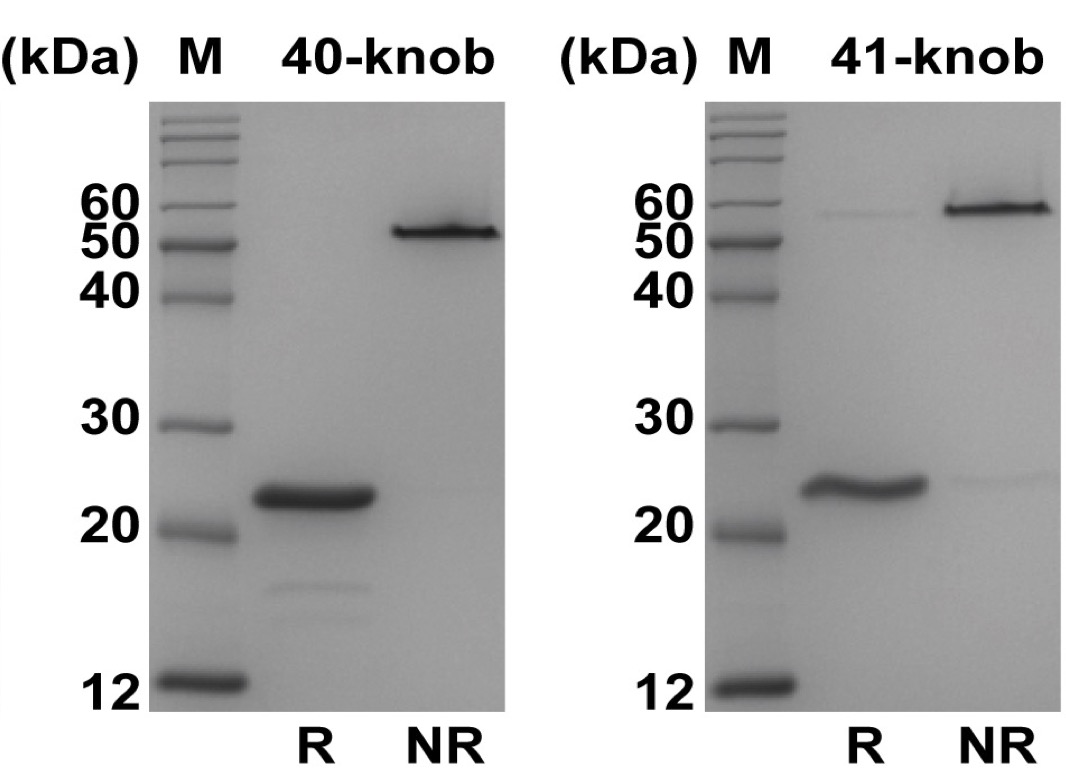
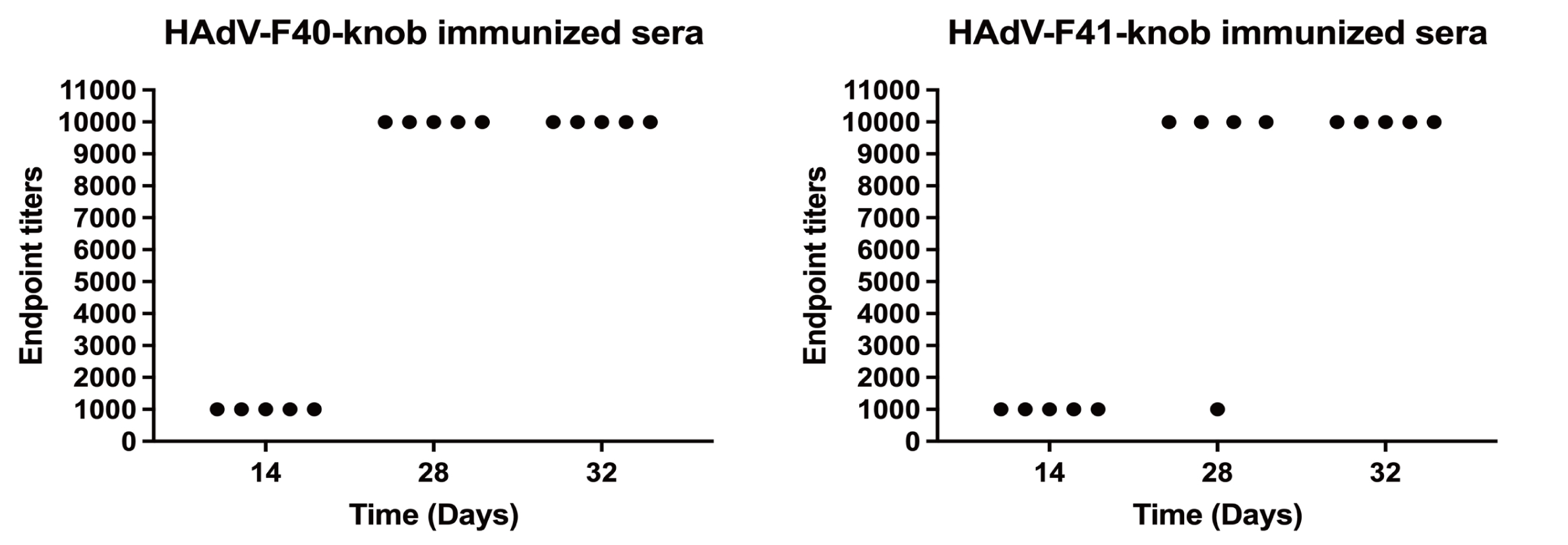
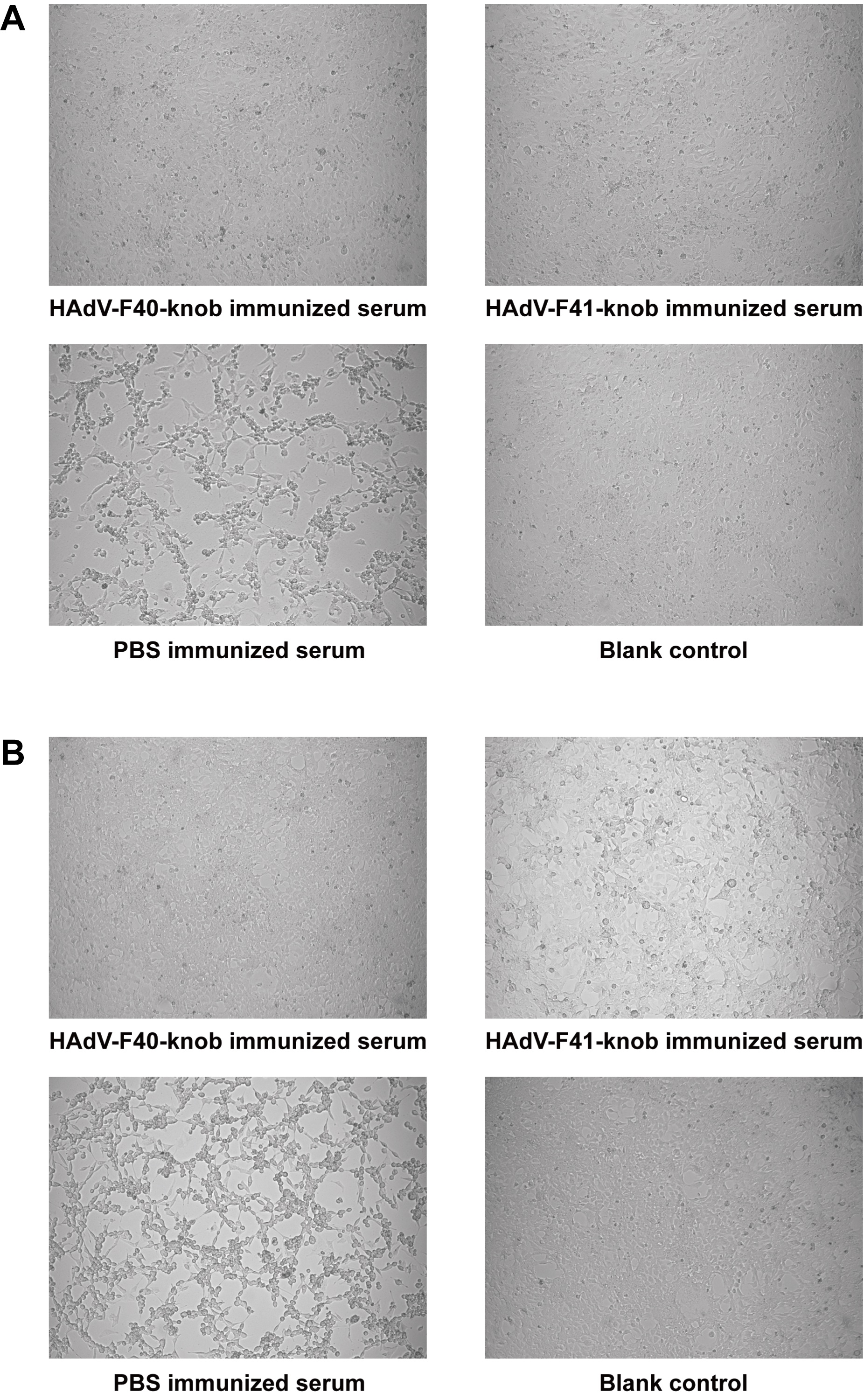
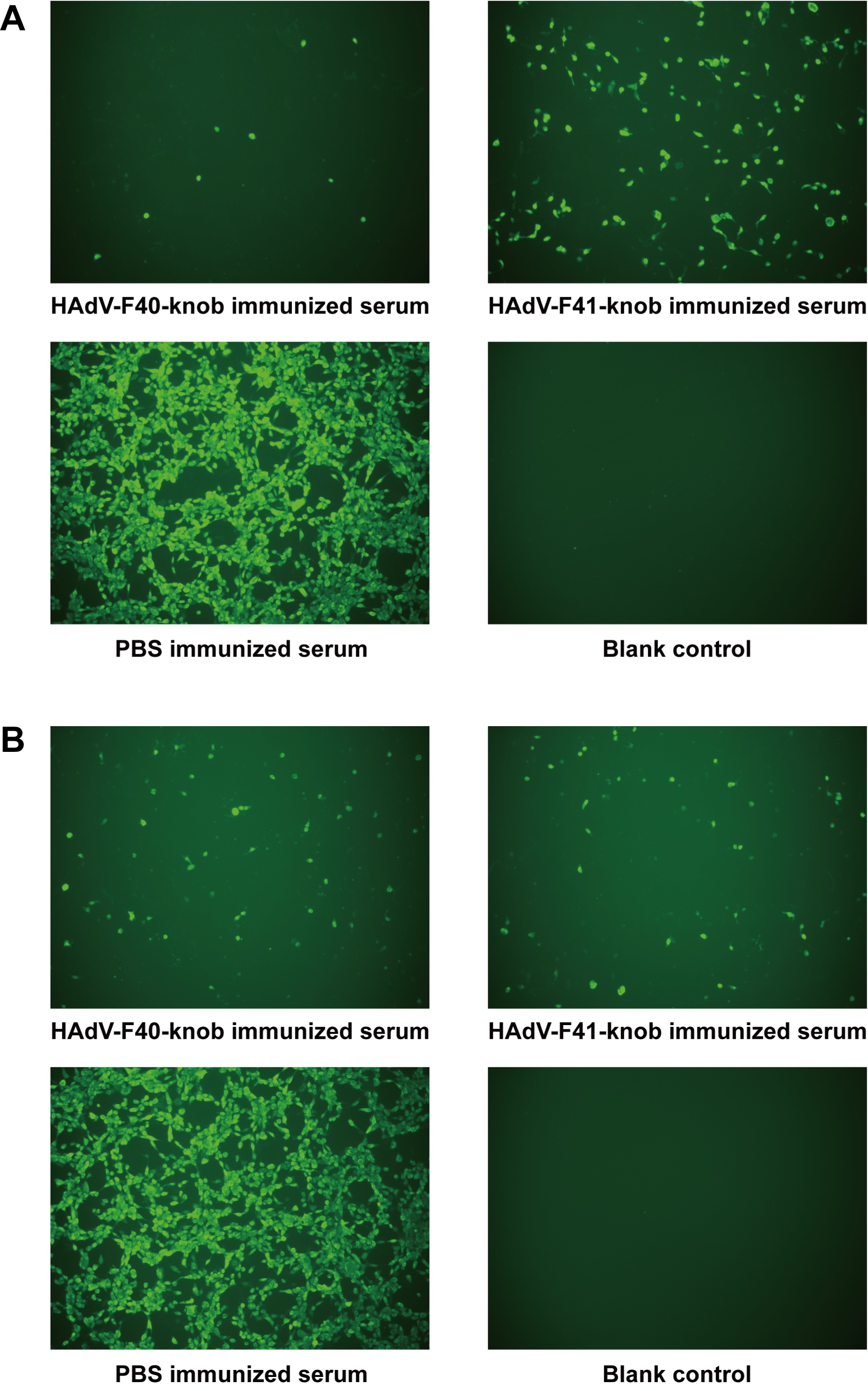
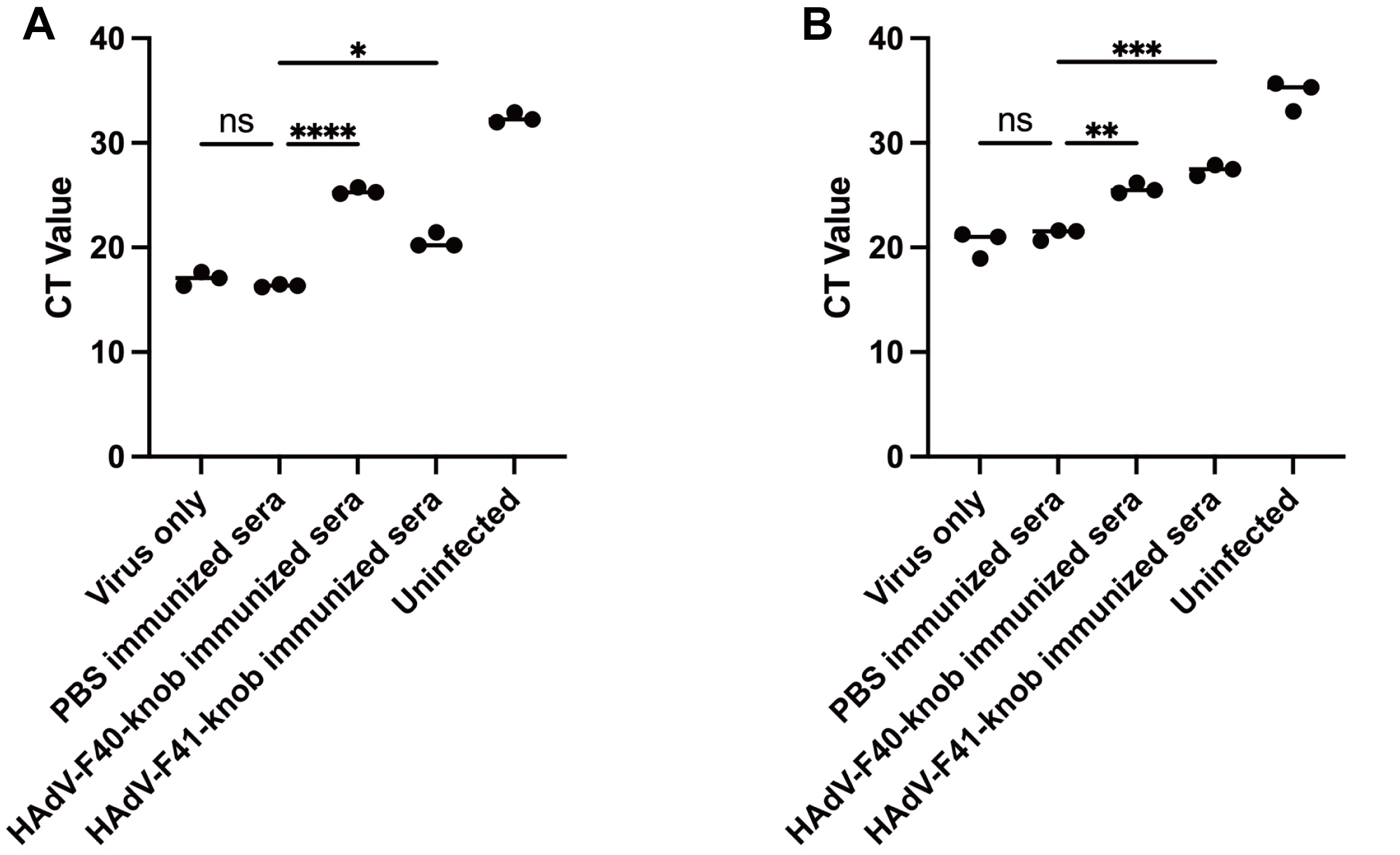
Discussion
- Significance of Species F Adenoviruses: The pathogenic potential of HAdV-F40 and HAdV-F41, particularly linked to diarrheal diseases, necessitates a comprehensive understanding of these adenoviruses to devise effective countermeasures, particularly crucial in resource-limited settings.
- Cross-reactivity and Neutralization Capabilities: The research uncovers intriguing insights into the cross-neutralizing potential of HAdV-F40-knob and HAdV-F41-knob immunized sera. The highlighted potential of expressed knob proteins for vaccine development paves the way for advanced studies on therapeutic applications of these neutralizing antibodies.
- Constraints and Future Studies: Recognizing the constraints of the study related to titer intervals, future research should explore the potential for higher neutralizing titers. Additionally, the potential of species F adenoviruses as gene delivery vectors offers an intriguing future study avenue, necessitating a detailed understanding of the adenoviruses’ propagation and neutralizing antibody profiles.
- Cross-reactivity Impact on Gene Delivery Vectors: The discovered cross-reactivity between NAbs of HAdV-F40 and HAdV-F41 indicates that pre-existing immunity to one adenovirus might neutralize the other, which should be factored into experimental design when employing these adenoviruses as gene transfer vectors.
- Groundwork for a Subunit Vaccine: The research provides a foundation for a subunit vaccine development that can protect against both HAdV-F40 and HAdV-F41, underscoring the potential of knob protein immunization in eliciting cross-neutralizing antibody responses. Future work will aim to improve the immunogenicity and efficacy of the subunit vaccine, offering a comprehensive solution against diseases caused by HAdV-F40 and HAdV-F41.
Reading summary
What is the motivation?
The study is driven by the ongoing threat of HAdV-F40 and HAdV-F41, which are major contributors to non-bacterial acute gastroenteritis in children, yet no effective vaccines are available. Additionally, the unique dual fiber structures of these viruses and their significant role in infection necessitate further research, particularly in the light of our former findings about cross-neutralizing and cross-binding antibodies.
What is the novelty & contribution?
The study pioneers the examination of cross-neutralization between HAdV-F40 and HAdV-F41 using immunized sera with the knob protein of the fiber-2 protein. This work uncovers that HAdV-F40-knob and HAdV-F41-knob immunized sera could neutralize both viruses, suggesting a new direction for developing vaccines. The research therefore not only provides fresh insights into the antibody response to these viruses but also lays the groundwork for innovative antiviral strategies against adenoviral infections.